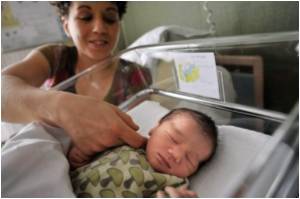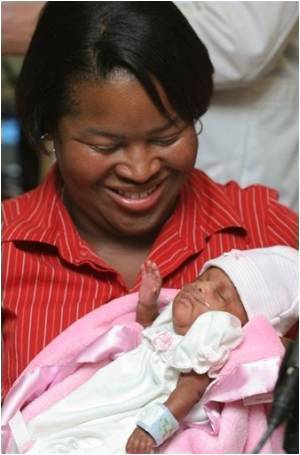
The findings suggest that certain hospitals' high rates of cesarean births have more to do with characteristics of the hospitals themselves than with characteristics of their patients.
"Even after taking into account factors that put women at risk of having a c-section, such as age, and pre-existing health conditions, some hospitals still have higher rates of c-section delivery than others," said senior author S V Subramanian, professor of population health and geography at HSPH. Put simply, for two women with a similar observed risk profile, one might have a c-section delivery and one might not, depending on which hospital they go to, he said.
The study appears in the March 18, 2013 online issue of the journal PLOS ONE.
While c-sections can be a lifesaving procedure for an infant in distress, or when there are multiple births or other labor complications, c-sections that are not medically necessary can put mothers and babies at avoidable risk of infection, extend hospital stays and recoveries, and increase health costs. In spite of these risks, c-section rates have been increasing in the U.S. over the past 17 years. Mirroring the national trend, cesarean deliveries in Massachusetts have increased steadily since 1997. In 2009, about one-third of all births in Massachusetts were by c-section—up 61% from 1998.
In 2008, the Massachusetts Department of Public Health invited local clinicians and researchers to partner with state health officials in a study to better understand why c-section rates have been rising in Massachusetts. The HSPH, Boston University, Massachusetts General Hospital, and Massachusetts Department of Public Health team, using data from the Pregnancy to Early Life Longitudinal data system, analyzed 228,864 births in Massachusetts' 49 hospitals with maternity services from 2004-2006—98% of all births during that period.
Advertisement
Previous research had been unable to offer clear answers on whether variations in hospitals' c-section rates had simply to do with hospitals' different case mix. But the new research findings, say the authors, show with more certainty that a mother's risk of c-section really is influenced by her choice of hospital. "This is the first time that anyone has shown this problem exists right here in Massachusetts, which is widely considered to be one of the world's premier health care hubs," said Mariana Arcaya, research scientist at the Harvard Center for Population and Development Studies and co-author of the study.
Advertisement
The researchers said that hospitals should re-examine their procedures for deciding when to perform c-sections to make sure that medical need—not other factors such as doctor preferences or fear of liability—determine how babies are delivered.
Source-Eurekalert









